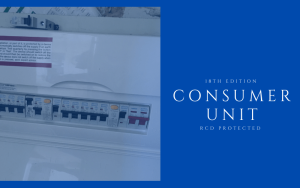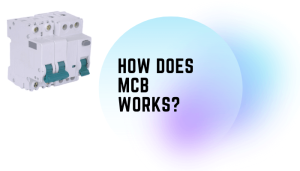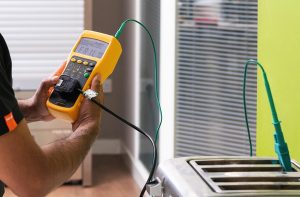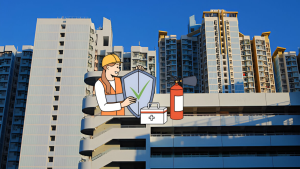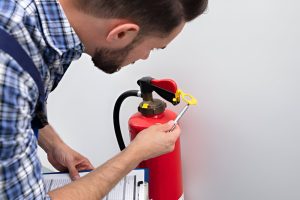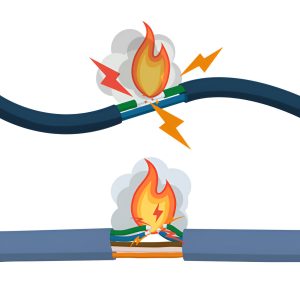Emergency lighting tests are an important part of maintaining rental properties. As a certified emergency lighting expert, I’d like to explain why they’re so essential and how they ensure the safety of tenants and property owners alike.
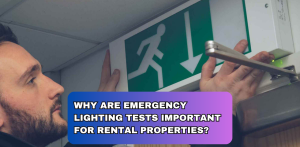
Fire safety is paramount in any kind of living or work space – but especially so for rental properties. In these locations, it’s not only vital that all fire precautions are up to date, but also that people feel secure enough to evacuate quickly if there ever was an emergency situation.
That’s where emergency lighting tests come into play; efficient testing can help keep everyone safe by ensuring that all exit routes are clearly marked and easily accessible should an emergency occur.
Identifying Potential Hazards
Emergency lighting tests are essential for rental properties in order to ensure the safety of tenants and visitors. Without these tests, there could be potential hazards that may lead to accidents or worse.
Being aware of any risks is a key responsibility of landlords when it comes to providing adequate housing conditions. Regular testing of emergency lighting systems can help identify issues before they become a major problem.
This includes making sure all fixtures are working properly and that lights remain illuminated even during power outages. By ensuring each system functions as intended, owners will have peace of mind knowing their buildings are compliant with fire codes and other regulations.
It’s also important to check whether emergency exit routes are clearly marked so people know how to safely evacuate if necessary. Having effective egress signage is one way to avoid confusion during an emergency and minimize panic among those who need to get out quickly.
Ultimately, performing regular emergency lighting tests helps protect everyone on the property from harm while avoiding costly damages due to negligence.
Checking Connections And Wiring
Testing emergency lighting is an important part of maintaining rental properties. It involves checking voltage, examining wiring and making sure the system meets local regulations. In this section we will discuss how to check connections and wiring for emergency lighting systems in rental properties.
When testing your emergency lighting system it’s essential to make sure all components are properly connected and any wires are secure. This includes both input power cables connecting to the main supply as well as any secondary control lines that may be used by a backup generator or switchboard.
Additionally, you should verify that any output circuits are correctly wired up with their associated loads such as exit signs or LED strips.
It is also important to check voltage levels during your inspection. Make sure there is proper current flow through each circuit and that no single component is drawing too much power from the system. If you detect a problem, inspect all related wiring and replace any damaged parts before continuing with further testing.
Finally, if necessary adjust switches according to national standards so that they deliver the correct amount of light when activated in an emergency situation:
- Verify connection between main power source and input cable
- Check integrity of secondary control lines
- Inspect output circuits for correct wiring with relevant load
- Measure voltage level throughout entire circuit
- Replace any faulty components found during test
- Adjust switches for optimum operation in emergency situations
By conducting these tests regularly you can ensure your emergency lighting system remains reliable and compliant with building codes over time.
Verifying Photocell Operation
As an emergency lighting expert, it is important to verify photocell operation during a test in order to ensure accuracy.
This can be done by checking the calibration of the device, as well as its position relative to the light source and other obstructions that may interfere with the sensor’s functionality.
A thorough examination should take into account factors such as power levels and temperature changes which could disrupt any photosensitive devices used for building safety.
When assessing these components, one must also keep in mind how lights are working together within a room or space; if one malfunctions then this could cause significant issues for those inside the property.
Furthermore, all tests conducted need to adhere strictly to local regulations and codes of practice so as not to compromise public safety when emergencies occur.
It is therefore essential that rental properties have their emergency lighting systems tested regularly with due diligence, so that tenants living there can rest assured they will receive safe illumination at all times.
By taking care of these matters proactively, landlords can help prevent potential disasters from occurring while helping occupants feel secure in their dwellings.
Examining Batteries And Back-Up Systems
Emergency lighting tests are a critical part of maintaining rental properties, as they ensure the safety of tenants. Without these tests, it is possible that an emergency could arise and vital lights may not be ready to assist in guiding occupants away from danger. As such, emergency lighting experts must take proper steps to make sure the system remains functional at all times.
One way this can be accomplished is by routinely checking the batteries and back-up systems associated with the emergency lighting system. Here’s a few tips for ensuring your property is always safe:
- Regularly replace any bulbs that have burnt out or are flickering.
- Monitor battery levels on a regular basis, making sure to keep them charged if necessary.
- Inspect cables regularly for signs of deterioration or wear and tear.
- Test the entire system every six months to guarantee its efficiency in case of an emergency situation.
- Make sure to properly document each test so you can review results later on down the line.
It is also important to remember that different types of fixtures require different kinds of maintenance procedures, so it’s essential to become familiar with yours before attempting repairs or replacements yourself. This will help reduce potential liability risks and make sure your tenants remain safe no matter what happens!
With diligence and dedication, we can all do our part in protecting those around us from harm – both now and into the future.
Inspecting Luminaires And Luminaire Covers
I’m an expert in emergency lighting tests and I’m here to talk about why they are important for rental properties.
Let’s start by looking at inspecting the luminaire power sources. This is to ensure that the power source is suitable for the luminaire and that it won’t cause any damage.
Next, we’ll identify any defects which may cause the luminaire to malfunction.
Then, testing the luminaire covers is important to ensure that they are correctly fitted and will protect the luminaire from any potential damage.
In summary, these tests are essential for rental properties to ensure the safety of tenants.
Inspecting Luminaire Power Sources
It’s important to inspect the power sources of luminaires during an emergency lighting test for rental properties.
After assessing voltage and evaluating wattage, it’s critical that we determine whether or not there is any potential danger in the current system.
If a circuit breaker trips, if light levels are too low, or if wiring isn’t properly installed; these could all lead to potentially hazardous situations should an emergency occur.
I’m sure you can understand why testing luminaire power sources regularly is so essential.
To ensure safety and compliance with regulations, it’s best practice to perform routine inspections as part of your maintenance schedule – especially when dealing with rental property!
Doing this will help reduce risk and save time should something go wrong down the line.
Identifying Luminaire Defects
After assessing the power sources of luminaires, it’s time to move onto identifying any potential defects in the components themselves. This requires a thorough inspection of both the luminaire and its cover – from checking for signs of wear or damage to assessing capacity and reliability.
In order to make sure that everything is running smoothly, we need to look out for anything that might prevent light from functioning properly during an emergency situation.
We should also be on the lookout for any loose connections which could lead to issues with performance. Additionally, if there are any blockages covering up the lighting source, this must be investigated as well since these can impede illumination levels greatly.
Checking all wiring and ensuring that they’re secure can help us avoid problems down the road; not only will this guarantee safety but it’ll save you money too!
Taking care of your rental property’s emergency lighting system is critical when it comes to providing adequate protection in times of danger. Regular inspections will ensure proper functionality and compliance with regulations – so don’t forget to check your luminaires regularly!
Testing Luminaire Covers
Once we’ve checked the power sources and connections, it’s time to move on to testing luminaire covers. These are important for ensuring compliance with safety standards as well as providing adequate illumination in an emergency situation.
We need to make sure that they aren’t faulty or damaged, which could potentially impede light levels significantly. In order to do this, we should inspect each cover individually by checking for any cracks or signs of wear and tear.
Additionally, covering up the lighting source must be avoided at all costs so that maximum visibility is achieved during a crisis! Lastly, if any issues are discovered, these must be rectified quickly to ensure the protection of those living in or visiting your rental property – no one wants their business put at risk due to inadequate lighting!
Testing All Devices And Signage
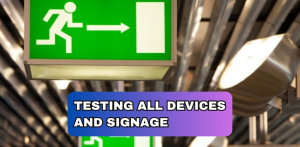
Emergency lighting tests are an essential part of ensuring rental properties meet safety compliance regulations. Testing all devices and signage can identify potential risks, which is critical for the occupants’ wellbeing. Knowing that a property meets these requirements means peace of mind for both landlords and tenants alike.
Testing involves multiple steps such as inspecting the installation location, checking battery capacity, and testing operation time during power outages. An experienced electrician with knowledge on current legislation should be consulted to ensure correct implementation of emergency lighting systems. They will also help determine whether any additional fixtures need to be added or replaced.
It is also important to check if any maintenance contracts are in place at the start of tenancy agreements, as this ensures regular servicing is conducted over the duration of the lease period. This helps prevent any issues arising from faulty batteries or outdated equipment – potentially saving you expensive repair costs down the line.
By taking these precautionary measures, landlords can rest assured their rental properties have been tested adequately to comply with industry standards and local regulatory guidelines.
Analyzing Battery Life
Emergency lighting tests are a critical part of rental properties, as they help to ensure the safety and security of tenants. The importance of regular testing is often overlooked or forgotten in favor of more pressing issues that arise when managing these types of buildings.
To keep occupants safe and secure, it’s essential for property owners to understand the basics of emergency lighting systems and how their maintenance can be managed effectively.
When it comes to maintaining an emergency lighting system, there are two main components: replacing batteries and conducting scheduled inspections. Replacing batteries should be done on a routine basis; this will ensure the system is always working properly and provides enough illumination during blackouts or other emergencies.
During battery replacement, check all connections to make sure they are securely fastened and free from corrosion or any signs of wear. Additionally, inspect all bulbs to determine if any need replaced due to age or damage.
Finally, periodic inspections should also be conducted by a qualified electrician every six months – at minimum. Inspectors will look for signs of excessive dust buildup which may affect the operation of the emergency lights, as well as examine wiring connections for fraying insulation or exposed wires which could create fire hazards. They’ll also test all switches, fuses and circuit breakers to make sure they’re functioning correctly before signing off on the inspection report.
Checking Torches, Spotlights, And Other Portable Lighting
Emergency lighting tests are important for rental properties as they ensure that the necessary safety requirements in case of an emergency or blackout event are met. Portable lighting such as torches and spotlights should be checked regularly to make sure they will function properly when needed. Evaluating brightness and replacing bulbs is essential, especially if the lights have been used frequently. Additionally, care must be taken to check for loose connections and frayed wires which may cause a short circuit leading to potential fire hazards.
It is also extremely important to replace batteries on portable lighting devices before their expiry date since expired batteries can impact accuracy and performance during an emergency situation.
Furthermore, it’s recommended to keep backup light sources stored in secure locations within easy reach so they can quickly be located when unexpected power outages occur. All portable lighting should always remain fully charged and ready for use at all times.
Testing these items not only ensures that occupants of rental property buildings stay safe but also help protect landlords from liability claims due to negligence or inadequate preparation for any potential incidents. It’s therefore paramount that regular maintenance checks are conducted on all forms of emergency lighting available in the building to minimize risks associated with power outages.
Documenting Results And Making Repairs
Documenting test results is key; I always make sure to document the results of any emergency lighting tests that I perform.
Making repairs is also essential; it’s important to make any necessary repairs after detecting any issues during a test.
Follow-up tests are equally important; I always do a follow-up test after making repairs to ensure that the emergency lighting system is functioning correctly.
It’s also important to document the results of the follow-up test too.
All in all, documenting the results of emergency lighting tests are extremely important for rental properties, as it helps to ensure that the lighting is functioning correctly and safely.
Without proper documentation and follow-up tests, rental properties may not be as safe as they should be.
Documenting Test Results
Well, it’s no secret that emergency lighting tests are important for rental properties. After all, they help to ensure the safety of both residents and visitors alike.
As an emergency lighting expert, I can tell you that documenting test results is a key part of this process. This means preparing thorough reports after each test and maintaining detailed records over time.
Doing so enables property owners to quickly identify any issues with their lights and make necessary repairs in order to keep everyone safe. Having up-to-date documentation also helps landlords easily prove compliance with fire codes if ever needed – critical information in case of an emergency or lawsuit down the road.
In short, having accurate records allows rental properties to remain vigilant about keeping people out of harm’s way.
Making Repairs
Once you’ve documented the results of an emergency lighting test, it’s time to take action. That means making any needed repairs or adjustments in order to ensure safety protocols are being met.
As an expert in this field, I can tell you that preventive maintenance is crucial for rental properties. Doing so allows landlords to proactively identify and fix potential issues before they become serious hazards and put people at risk.
Plus, following these steps helps keep everyone safe while also helping avoid hefty fines due to code violations down the line.
So, if you own a property with emergency lights, make sure you regularly inspect them and address any problems right away.
Follow-Up Tests
Once you’ve taken care of any repairs or adjustments needed based on the results of an emergency lighting test, it’s important to keep up with follow-up tests.
This will help confirm that all safety protocols are being met and that your property is compliant with regulations.
As a professional in this field, I can tell you that checking local codes and establishing a regular maintenance schedule for testing are key components to staying safe.
Plus, taking these steps now helps avoid hefty fines due to code violations down the line.
So don’t delay – make sure you’re regularly inspecting your emergency lights and addressing any potential issues as soon as possible.
Complying With Regulations
Emergency lighting tests are incredibly important for rental properties, as they help ensure compliance with safety regulations and protect tenants from hazardous situations.
In order to meet the standards set by regulatory bodies, it is necessary to conduct regular testing of emergency lights and implement strategies that make sure all systems are in working condition at all times.
From detailed inspections of individual components to full-scale system tests, a comprehensive approach must be taken when evaluating emergency lighting performance in rental units. This means carefully examining each light fixture and its associated wiring connections for any signs of damage or wear, as well as ensuring that their batteries can provide power during an outage.
Additionally, periodic system tests should be conducted to simulate real-life scenarios like blackouts or brownouts so landlords can identify potential issues before they cause harm.
The importance of these measures cannot be overstated; proper implementation will not only keep tenants safe but also spare landlords from costly fines or punitive actions resulting from noncompliance with safety regulations.
By staying up to date on applicable laws and investing in quality equipment, property owners can rest assured knowing their premises remain compliant while offering occupants reliable protection both day and night.
Frequently Asked Questions
How Often Should Emergency Lighting Tests Be Performed?
Regular emergency lighting tests are like a sharp knife in the kitchen – they keep your energy efficiency and safety on point.
It is vital for rental properties to perform regular tests of their emergency lighting systems, as it helps them avoid potential repercussions caused by infrequent testing.
As an emergency lighting expert, I recommend that these tests be conducted at least once every 12 months to ensure all equipment remains compliant with current regulations and standards.
Furthermore, conducting these tests regularly could provide considerable cost savings through improved energy efficiencies.
What Is The Best Way To Document The Results Of Emergency Lighting Tests?
Documenting the results of emergency lighting tests is an essential safety protocol for any rental property.
It’s important to keep accurate records in order to ensure that all applicable regulations are being met and that occupants remain safe during a power outage or other emergency situation.
The best way to do this is by creating a detailed checklist with required components such as testing intervals, battery life, illumination level, and proper functioning equipment.
Also include any maintenance or repair recommendations so that they can be addressed quickly and efficiently by your emergency planning team.
Are There Any Special Regulations For Testing Emergency Lighting In Rental Properties?
Testing emergency lighting in rental properties is an essential part of ensuring fire safety and egress requirements. Special regulations for this type of testing should be followed to ensure the highest level of safety and security.
As a certified emergency lighting expert, I recommend conducting regular tests and documenting results accurately to prevent any potential risks or liabilities associated with faulty installations.
To make sure all your bases are covered, hire a professional electrician who is familiar with local fire codes and can help you stay compliant.
Are There Any Special Considerations When Testing Emergency Lighting In Multi-Story Buildings?
When testing emergency lighting in multi-story buildings, there are certain considerations that must be taken into account.
Inspectors must take extra care to ensure all safety standards and regulations are met while performing any inspection methods on the system.
The age of the building may also require some additional steps due to newer systems being installed since its construction date.
It’s important for inspectors to follow specific guidelines when assessing these types of buildings as they can pose greater risk if not done correctly.
What Is The Most Efficient Way To Inspect And Test Emergency Lighting?
Emergency lighting tests are an essential part of the inspection process for any rental property to ensure safety and compliance.
On average, inspecting and testing emergency lighting can take up to 4 hours depending on the size of the building- but there are ways to save time while still ensuring safety precautions are met.
One of the most efficient methods is to check all power sources first, making sure they’re functioning correctly, then assessing whether or not lights and fixtures comply with your local requirements.
To inspect each individual fixture takes only a few minutes- so this method allows you to quickly move from one device/area to another in order to finish as efficiently as possible.
With proper planning, you’ll be able to complete your emergency lighting test within 2-3 hours – saving you valuable time!
Conclusion
Emergency lighting tests are an essential part of tenant safety in rental properties. Testing should be conducted regularly to ensure that the lights will function when needed, providing tenants with a safe escape route during an emergency situation.
Proper documentation is also key for these inspections, so landlords and property managers can have peace of mind knowing they are meeting all requirements. By utilizing efficient testing methods, as well as being aware of any special regulations or considerations for multi-story buildings, landlords can guarantee their tenants’ safety and security by ensuring that emergency lighting systems work properly and reliably.
As an expert on this subject, I am proud to offer my services to help make sure rental properties meet these important standards.



